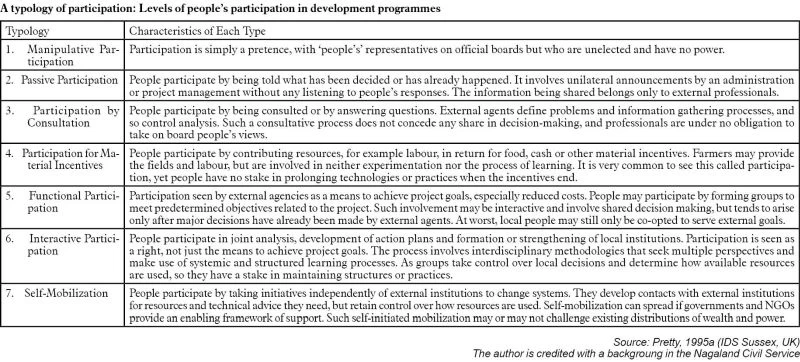
Raj K. Verma
Kudos to Monalisa Changikija for hitting the nail on the head in her commentary “Dialogue, don’t protest” (Morung Express, 12th July 2007) as well as your edifying editorial of the same day titled “Development as transformation”. Both served well to drill in a few home truths with constructive remedial suggestions, thus implying that a malaise needing redress exists.
While bureaucracy-bashing may seem a very convenient outlet to ventilate an ire borne out of over 40 years of “infrastructural development”, there is a need to shift focus from the hot target in the firing line and look beyond the obvious, bereft of myopic tunnel vision. After all, development is about partnerships within civil society and all sections of it, and not just the concern of the civil service or bureaucracy and other segments working in an insulated environment.
To me, some of the soul searching questions roused by these two articles are: What is this “superstructure” that Monalisa writes about? Is it ‘development as transformation’ or the other way around, ‘transformation as development’? Are both complementary to each other, or each a prerequisite for the other? Peoples’ Participation as a form of “release” or “relief”? In the Naga context, how does one define and measure the “development consultant’s” jargon like Empowerment, decision making, dignity, equity, sustainability, standard of life, ownership etc? Capacity building for what and for whom? Interdependence or independence? Are these processes or products, all contributing to the (as yet) utopian superstructure? Questions that beg answers.
Nagaland has made tremendous strides in recent years in coming to terms with a globalised world economy, but the journey has only just begun, hence the need to dialogue. Within the Indian firmament of “infrastructural development” we command our own unique niche in the VDB movement (yes, movement) and the process of communitisation. The growth of civil society organizations, pilot projects like NBDA and NEPED, approaches like SHG and farmer-led interventions in implementation are some of the initiatives made in order to “induce” peoples’ participation in development.
One can talk about participatory methodologies, bottom up approach and so on. But the bottom line is that these involve a change in attitude, a paradigm shift in mindset, a political will and an enabling environment by and for all partners in development. The answer lies in “doing it with them” and not “doing it for them”. Only then will development take place in a level playing field, shorn of turf wars and parochial barriers.
In order to carry the issue further towards some more meaningful and constructive dialogue, I reproduce below ad verbatim “The typology of participation” suggested by Jules Pretty. It would be interesting to see which typology ranks highest in readers minds, in the context of Nagaland as of today, from the 7 typologies enunciated, maybe through another opinion poll.




